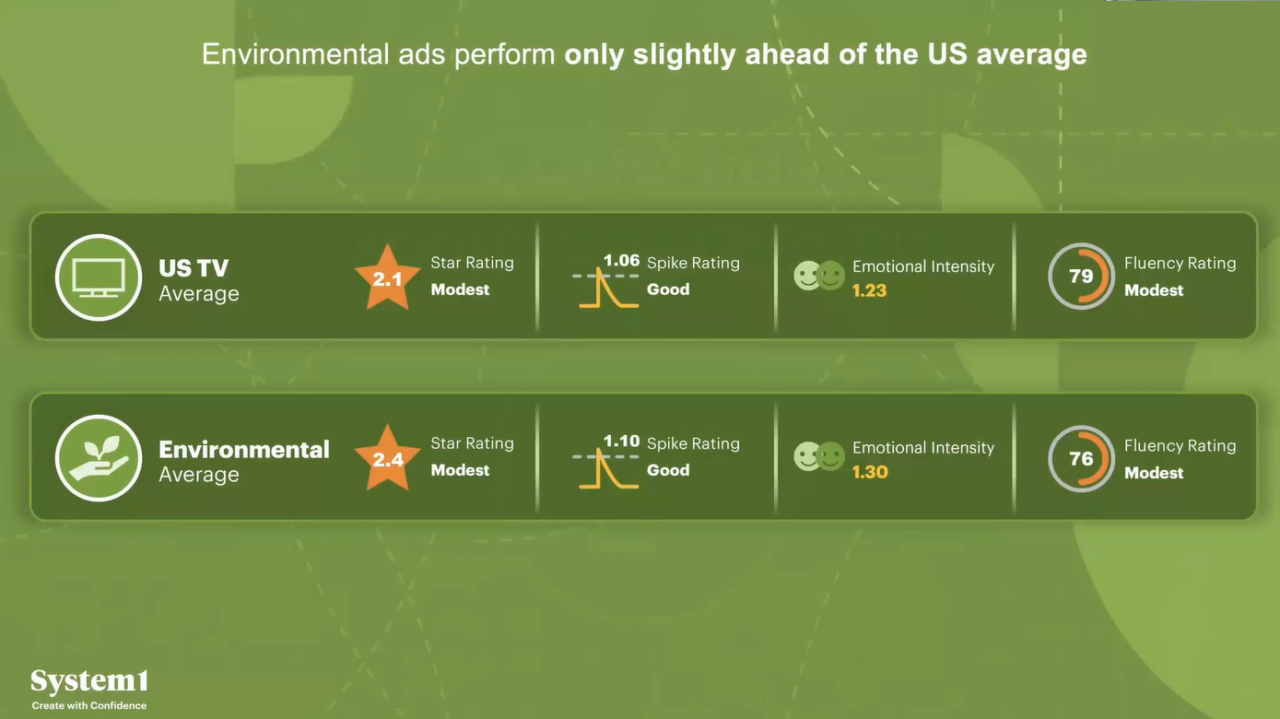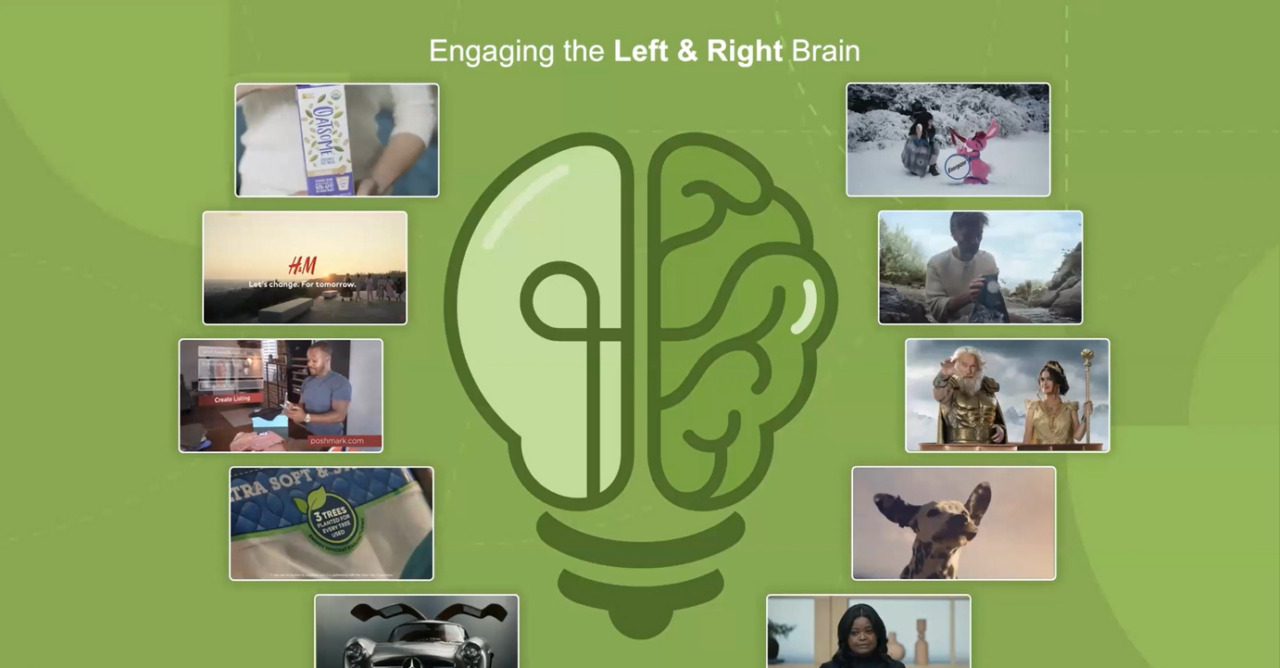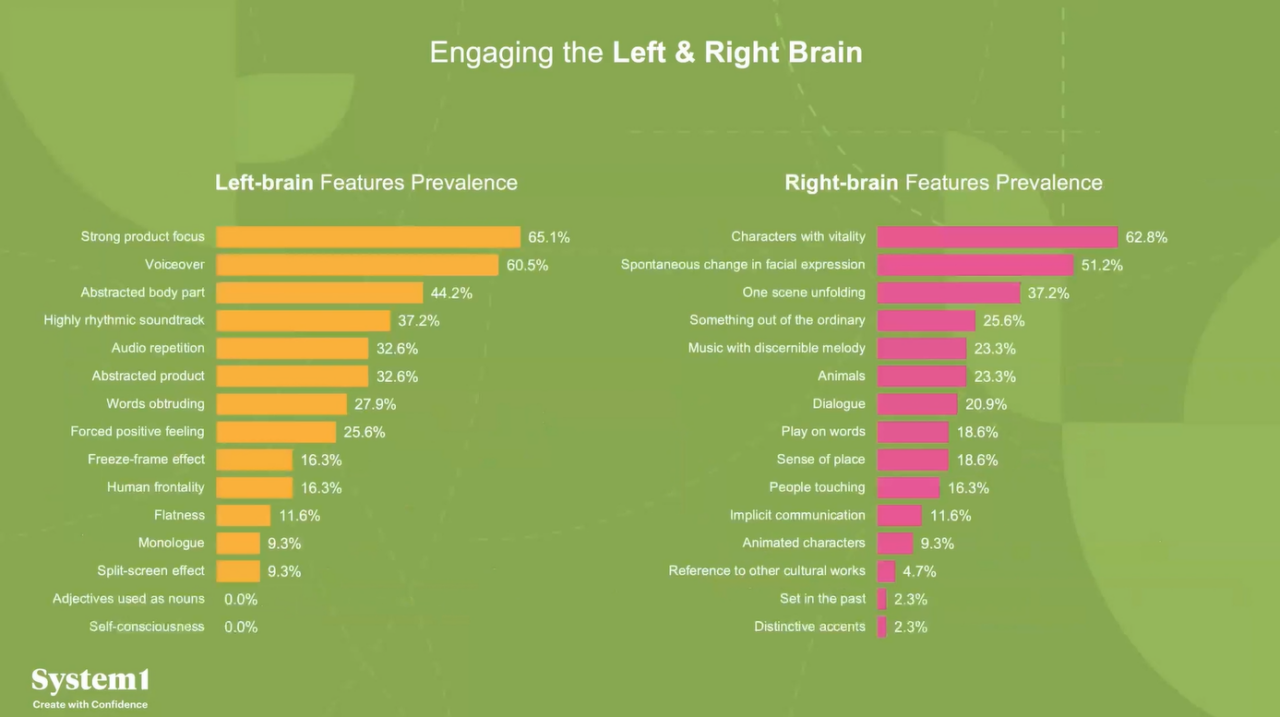Incorporating sustainability into advertising strategies is not just about keeping up with current trends, but about building deep and lasting value for the brand, the consumer and society as a whole. Also, System1 believes in the potential of advertising to spur meaningful behavioral change when it comes to sustainability. It has also addressed this topic in its research for The Greenprint USA.
System1 started looking at sustainability in advertising about three years ago.
"It's one of the biggest issues we're going to face as a generation. And we thought how can we use our database and the insights we've gathered to try to be helpful in terms of how advertising works and how advertising delivers sustainable messages,"
said Jon Evans, CEO at System1, who presented the research in a webinar.
To help, System1 brought in renowned experts - Richard Shotton, who is the author and founder of Astroten, and Ben Purcell, who works as creative director at David & Goliath.
The Greenprint USA report includes:
- the latest data on the state of green advertising,
- key insights to help develop creative that incorporates environmental messaging,
- the best examples illustrating how advertisers are implementing these themes in their campaigns,
- a closer look at how to encourage meaningful behaviour change.
Sustainable advertising is not a competitive advantage
Companies that assume they can score points with consumers through sustainable advertising are sadly mistaken. Sustainable ads have a 2.4 star rating, making them only slightly above the US average (2.1 stars). This means that sustainable advertising unfortunately won't give advertisers much of an advantage on its own.
Moreover, interestingly, only 79% of people can recognize a brand when they casually glance at an ad. Therefore, you need to make sure consumers know who you are.
 Source: System1
Source: System1So how do you do advertising with a sustainable message?
Advertisers need to "get a grip" on the problem in the right way. It is good to focus on what activates the right and left hemispheres of our brain, i.e. what essentially generates our attention. Orlando Wood has addressed this question in his books Lemon: How the advertising brain turned sour and Look Out. In writing his books, he drew on psychiatrist and neuroscientist Ian McGillchrist's The Master and His Emissary. So how do the left and right hemispheres of the brain work, according to Orlando Wood?
 Source: System1
Source: System1Wood states that the right hemisphere of the brain is affected by things like characters, acting, stories, music, facial expressions, etc. These things that grab our attention, evoke emotions, and are stored in long-term memory are likely to lead to a good Star Rating and a good Fluency Rating. The right hemisphere is particularly affected:
- Vital Characters,
- spontaneous change in facial expression,
- the unfolding of a scene,
- something unusual
- music with a recognisable melody,
- animals,
- dialogue,
- wordplay,
- etc.
The left hemisphere, on the other hand, is more transactional and task-oriented. It is much narrower. And it's much more in line with product advertising, which is detail-oriented and call-to-action oriented. Now that we're experiencing the rise of social media and the channel, this style of advertising is starting to dominate. Unfortunately, it is less effective than the right hemisphere. The left hemisphere in particular is affected:
- Strong product focus,
- voiceover,
- abstracted body parts,
- audio repetition,
- abstracted product,
- intrusive words,
- forced positive feeling,
- freeze-frame effect,
- monologue,
- etc.
So advertisers should focus on the right hemisphere and use a more emotional style of advertising, which we already know works better.
 Source: System1
Source: System1Six key points
The study defined six key themes that really work and provide good guiding principles for quality advertising with a sustainability message:
- Put hope before fear: if information causes us pain, scares us or makes us feel uncomfortable, we tend to turn away from it. Figuratively speaking, we stick our heads in the sand. So, if you want to get people to care about the environment, by scaring them, you achieve the exact opposite.
- Tell stories instead of statistics: statistics leave us cold. We are much more moved by the individual stories of recognisable people. So if you want to move people to care about something, don't tell them about the thousands of tonnes of plastic produced or the millions of kilograms of carbon emitted, but create an individual story that allows them to feel that emotion.
- Focus on action: you need to show people what they can do. But be careful not to try to get them to take one giant leap in their behaviour. Instead, identify one small thing they can do. And if you remind them later of their past behavior, they are likely to make other changes that are consistent with that environmental behavior.
- Only meet consumers 90% of the way: the bottom line is that you need to motivate people. And it's good to get them to remove small barriers. An example is a 2011 study by Paul Rosen of the University of Pennsylvania. He worked with a cafeteria and changed the way vegetables were presented every other day. Initially, people were very close to the dispensing point and had a scoop to scoop the vegetables. Gradually they found access difficult. He started by moving the vegetables six centimetres further away and replacing the spoon with tongs. And he found that the amount of vegetables eaten increased by 8-16 percent.
- Use the right messenger: the effectiveness of a message is not just in what is said, but also in who says it. So you need to spend as much time and energy as possible thinking not only about the content of the message, but also about who is delivering it...
- Entertain them, entertain them, entertain them: instead of pointing out the benefits to society, it is more effective to focus on having fun, having fun, feeling good.
Ad examples:
Kia – Robo Dog (Super Bowl 2022)
Video: Kia – Robo Dog (Super Bowl 2022)
The advertising is incredibly impressive. It has achieved a 4.8 star rating, which far exceeds the average Super Bowl commercial (2.6). It used a harmonious combination of things that affect the right hemisphere of the brain - music, story, animal. The advertiser chose to use a familiar soundtrack instead of a celebrity for this ad. The music here was almost like another character in itself - it took the ad to the next level. The ad worked great. It had 40 to 50 million views on TikTok alone.
LG – Better Choices Make a Better World
Another effective ad is from LG and is very unusual for a technology brand. Typical ads are usually focused on the product, features and benefits and such, but LG has taken a very different approach.
Video: LG H&A – Better Choices Make a Better World
Animation was an excellent choice for this ad, and the ad also feels like a short film, 90 seconds is not quite the usual length of an ad these days. Another plus is the well-crafted soundtrack. The sound very probably helped a lot to increase the response.
Hellman's – Mayo Cat
Video: Mayo Cat – Hellmann’s Big Game :60
What's interesting about the spot, which focuses on rescuing leftover food instead of throwing it away, is that the main celebrity is not actress Kate McKinnon, but Mayo the cat. Moreover, there is no direct persuasion of consumers, there is no coercion involved. According to Jon Evans, sometimes the right way to go can be not to make it completely clear that we are saving the environment, and instead just appeal to people's emotions. And inspire them to make small changes that they can make without thinking about it or realising it.
Amazon – Alexa, let’s get sustainable
Most recently, Jon Evans presented an Amazon commercial. The company believes that even something as small as turning off a light can help the planet, so it's trying to make its devices more sustainable by using recycled materials. There are two important elements in her ad spot: making small changes and choosing the right messenger. The message here is delivered by a child, which is disarming. So while it's about thinking about the future, it doesn't come across as cold science fiction.
Video: Amazon – Alexa, let’s get sustainable
Summary at the end
Based on research from The Greenprint USA, presented by Jon Evans in a webinar, it is clear that if sustainability advertising is to be effective, it must focus on six key points. Firstly, it is important to prioritise hope over fear and tell stories instead of statistics. It is also essential to focus on concrete actions that people can easily take and to put small obstacles in front of consumers. Last but not least, it is important to choose the right messenger for the message and deliver entertaining content that engages and entertains. In addition, advertisers should harness the emotional power of advertising, which activates the right hemisphere of the brain and is stored in long-term memory.
Sustainability-focused advertising not only has the potential to increase consumer loyalty to a brand, but also to educate and inspire them to make positive changes. Done right, sustainable advertising can have a significant impact not only on individual brands, but on society as a whole.
Source: system1group.com

